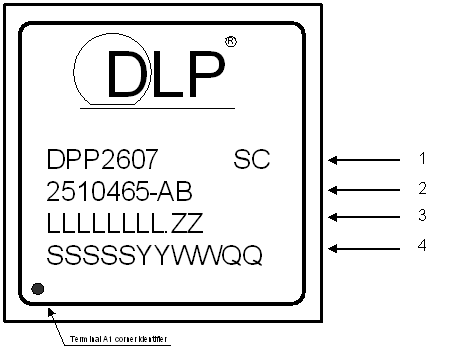JAJSFU7E December 2013 – March 2019 DLPC2607
PRODUCTION DATA.
- 1 特長
- 2 アプリケーション
- 3 概要
- 4 改訂履歴
- 5 Pin Configuration and Functions
-
6 Specifications
- 6.1 Absolute Maximum Ratings
- 6.2 ESD Ratings
- 6.3 Recommended Operating Conditions
- 6.4 Thermal Information
- 6.5 Typical Current and Power Dissipation
- 6.6 I/O Characteristics
- 6.7 Internal Pullup and Pulldown Characteristics
- 6.8 Parallel I/F Frame Timing Requirements
- 6.9 Parallel I/F General Timing Requirements
- 6.10 Parallel I/F Maximum Parallel Interface Horizontal Line Rate
- 6.11 BT.656 I/F General Timing Requirements
- 6.12 100- to 120-Hz Operational Limitations
- 6.13 Flash Interface Timing Requirements
- 6.14 DMD Interface Timing Requirements
- 6.15 mDDR Memory Interface Timing Requirements
- 7 Detailed Description
- 8 Application and Implementation
- 9 Power Supply Recommendations
-
10Layout
- 10.1
Layout Guidelines
- 10.1.1 Internal ASIC PLL Power
- 10.1.2 General Handling Guidelines for Unused CMOS-Type Pins
- 10.1.3 SPI Signal Routing
- 10.1.4 mDDR Memory and DMD Interface Considerations
- 10.1.5 PCB Design
- 10.1.6 General PCB Routing (Applies to All Corresponding PCB Signals)
- 10.1.7 Maximum, Pin-to-Pin, PCB Interconnects Etch Lengths
- 10.1.8 I/F Specific PCB Routing
- 10.1.9 Number of Layer Changes
- 10.1.10 Stubs
- 10.1.11 Termination Requirements:
- 10.2 Layout Example
- 10.1
Layout Guidelines
- 11デバイスおよびドキュメントのサポート
- 12メカニカル、パッケージ、および注文情報
デバイスごとのパッケージ図は、PDF版データシートをご参照ください。
メカニカル・データ(パッケージ|ピン)
- ZVB|176
サーマルパッド・メカニカル・データ
11.1.2.1 デバイス・マーキング

マーキングの定義:
- DLPデバイス名
- TI型番
- LLLLLLLL.ZZは半導体ウエハーの工場ロット・コードと鉛フリー半田ボール・マーキングです。
- SSSSSYYWWQQ: パッケージ組み立て情報
SC: 半田ボール組成
e1: SnAgCuからなる鉛フリー・半田ボールを示しています。
G8: 錫・銀・銅(SnAgCu)からなり、銀の含有量が1.5%以下で、モールド化合物がTIのグリーン規定を満たしている鉛フリー半田ボールを示しています。
AB (1つまたは2つの英数字)=「A」はTIデバイス・ダッシュ番号です。「B」は未認定デバイス・マーキング用です。プロトタイプやスキュー・ロット・サンプルなどの未認定デバイスには、いずれも「B」のマーキング位置に(TI型番に続けて)「X」を記したラベルが貼付されます。認定済みデバイスは「B」が空欄のままです。
LLLLLLLL: 製造ロット・コード
ZZ: ロット枝番号
SSSSS: 製造サイト
YYWW: 日付コード(YY=年、WW=週)
QQ: 認定レベル・オプション ― エンジニアリング・サンプルの場合は、このフィールドの末尾にESが付きます。
例えば、KOREA0914ESは2009年第14週に韓国で製造されたエンジニアリング・サンプルです。